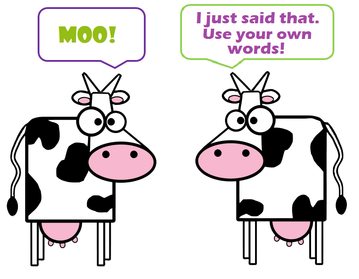Paraphrasing simply involves rewording a particular text, whether spoken or written and putting it in your own words while retaining the meaning. It is neither akin to a summary (where you restate but shorten someone’s words) nor quoting (where you use the original text word-for-word and use quotation marks). We have precise steps that you can follow in order to paraphrase a text appropriately:
- Read the text multiple times and glean its meaning.
- Articulate that deciphered meaning and key concepts without looking at the original.
- Cite your source.
Consider the example below.
Strong-Leek: “The actions, ethos, and characterizations in the text depict a culture in transition, with indigenous practices which may be perceived as untenable to foreigners, but which are ordinarily accepted within.”
Paraphrased Statement: The beliefs, activities and representations essentially depict a morphing culture rife with well-accepted ethnic practices that foreigners may deem inappropriate (Strong-Leek, 2001).
Mind that whenever you use another person’s ideas and put them across in your own words, you must cite the source or sources. Unemployed professors maintain that this important because it not only gives credit to the originator of the information, but also enables you to back up your arguments.
Avoid Plagiarism
Avoiding plagiarism when paraphrasing is a delicate task. You want to avoid using wording or sentence structure that resembles the original. If the resemblance is too close, then it will come off as plagiarism. Plagiarism is unethical. Get this key Unemployed professors’ advice, the idea being communicated needs to be passed, but the wording needs to be your own.
